Like snakes and lizards, fish, including sharks, are ectothermic. This means that, normally, they’re not capable of regulating their own body temperature. However, sharks that live in frigid Arctic waters have developed some pretty incredible methods to keep warm. Using something called counter-current heat exchange, sharks can survive in even the coldest of the world’s oceans.
Here, we’ll discover seven species of shark that spend their lives swimming in the coldest waters on Earth. We’ll learn about their life cycles, diets, behaviors, and more.

1. Porbeagle
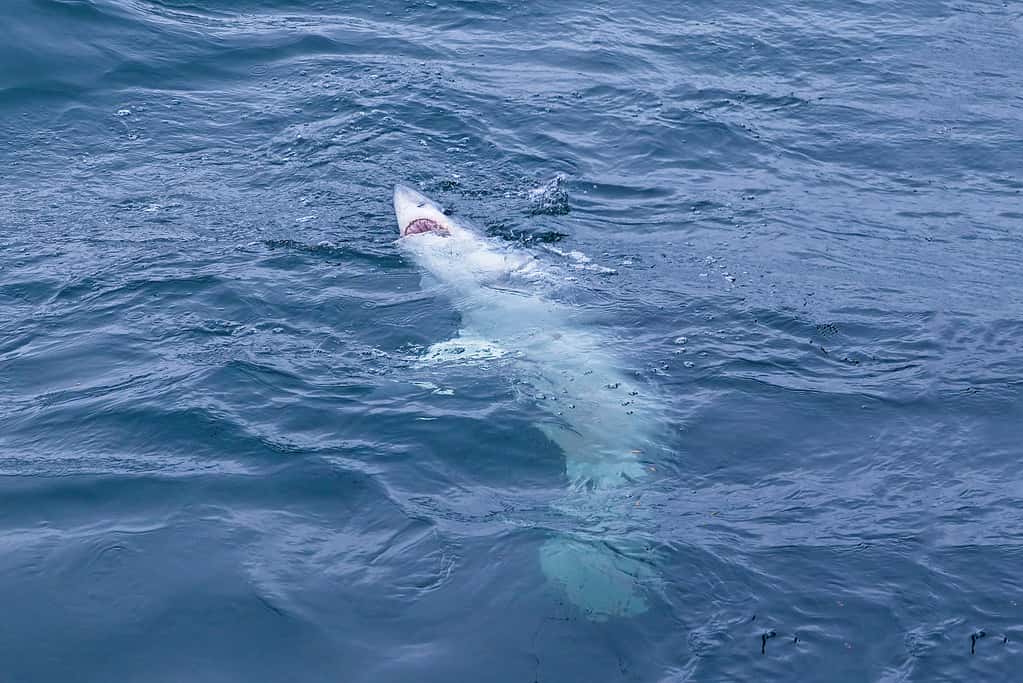
Lamna nasus, the porbeagle, looks like a miniature
great white shark
.
©birdsonline/ via Getty Images
Porbeagles are some of the smaller sharks that live in frigid Arctic waters. They have torpedo-shaped bodies with wide girths, narrow tails, and pointed snouts. Their pectoral fins are longer than their dorsal fins, and they have stiff, upright tails in addition to large eyes. Their backs and sides are gray, while their bellies are white. They look like compressed versions of great white sharks.
These sharks have been observed both alone and in small schools. They eat a wide variety of bony fish, including herring, cod, flatfish, mackerel, icefish, and pilchards. They also eat smaller sharks, like spiny dogfish, as well as squid and octopus. Porbeagles grow up to 12 feet long and can weigh up to 500 pounds. They’re currently listed as Vulnerable and live throughout the north Atlantic and many Arctic waters.
2. Salmon Shark
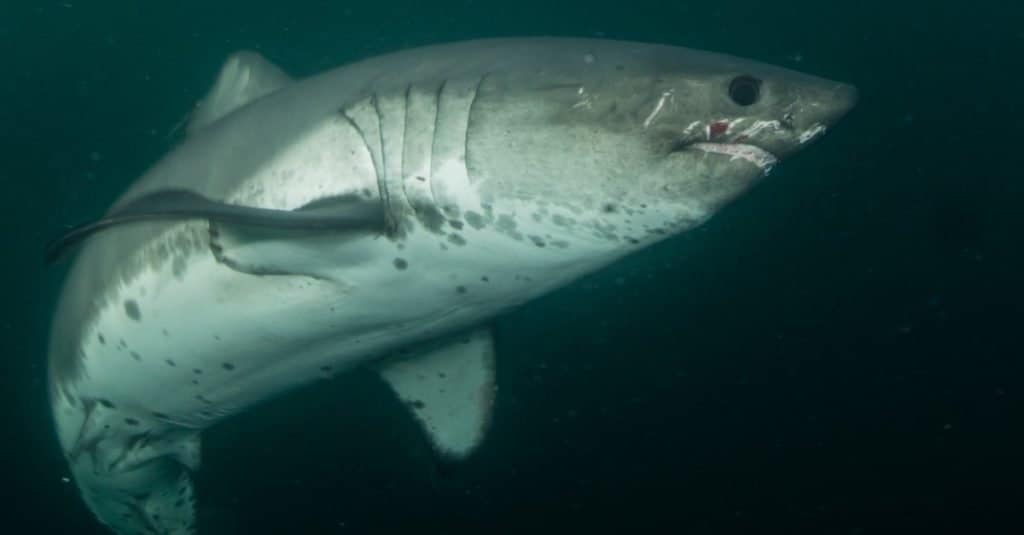
Lamna ditropis, the salmon shark, is a species of mackerel shark that hunts cold northern waters.
©Warren Metcalf/Shutterstock.com
Salmon sharks that live in frigid Arctic waters are apex predators. Unsurprisingly, they eat a lot of salmon, as well as squid, herring, and other medium-sized fish. They’re only found in the northern Pacific and have occasionally been spotted off the coast of Washington state. These sharks have very thick, short bodies with long fins. They grow up to 10 feet long and can weigh almost 500 pounds. Salmon sharks have white bellies with dark gray and black coloring on their backs and sides.
The salmon shark takes around 10 years to reach sexual maturity for females, and five years for males. They’re not dangerous, and few to no attacks on humans have ever occurred.
3. Spiny Dogfish
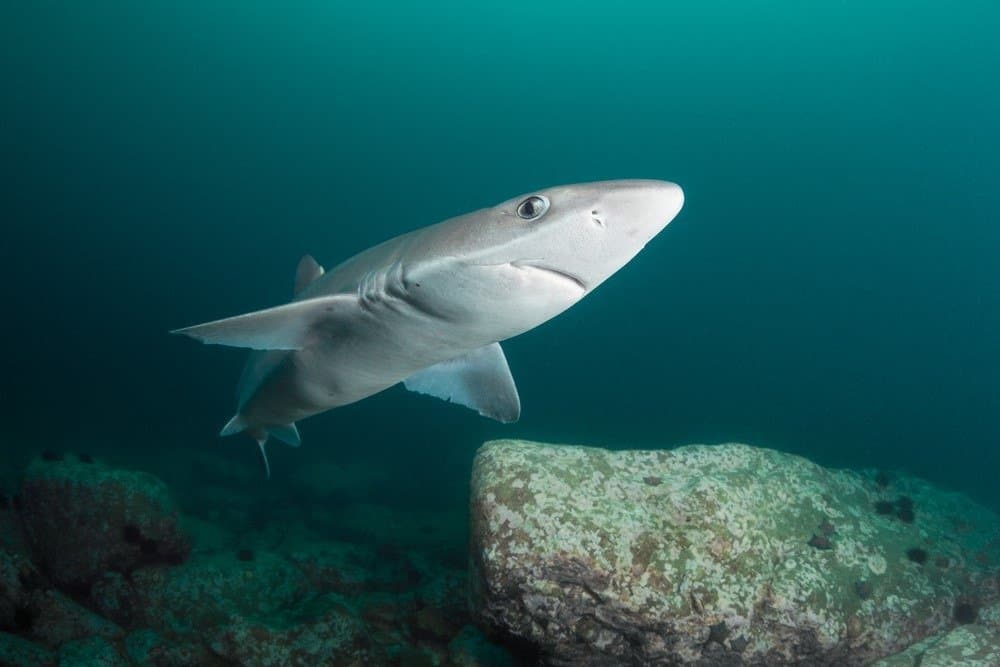
Squalus acanthias, the spiny dogfish, only live in cold northern waters during the summer months, when they follow prey north.
©Boris Pamikov/Shutterstock.com
The spiny dogfish is one of the smallest sharks that live in frigid Arctic waters. These sharks are currently listed as Vulnerable to extinction and live only in oceans and coastal waters. They grow up to 5 feet long, though most are between 2-3 feet. Spiny dogfish have large eyes and long snouts. They eat small fish like herring, as well as crab, shrimp, squid, and other invertebrates. These sharks take a long time to reach sexual maturity—up to 12 years for females.
4. Pacific Sleeper Shark

Somniosus pacificus, the Pacific
sleeper shark
, lives only in the northern Pacific Ocean.
©shweta.onlinetester/Shutterstock.com
Pacific sleeper sharks are some of the largest sharks that live in frigid Arctic waters. They grow at least as large as 14 feet long, though they may exceed 20 feet long in some cases. These sharks live in very deep waters, so they look a little different than your usual shark. Pacific sleeper sharks have blunted snouts, thick bodies, and very low dorsal fins. They have an all-over gray color and eat many fish and invertebrates. They’re not commonly seen, but they are believed to be common in the northern Pacific ocean.
5. Greenland Shark

Somniosus microcephalus, the Greenland shark, produces urea to keep itself warm.
©Dotted Yeti/Shutterstock.com
Greenland sharks that live in frigid Arctic waters are only found in the coastal areas of the north Atlantic. These sharks are famous for their incredibly long lifespans; some estimates range as long as 500 years. Greenland sharks live exclusively on the seafloor, eating anything they can find at great depths. They grow to over 21 feet long and may weigh over 2,000 pounds.
Because of their highly variable diet, Greenland sharks have teeth that look closer to the teeth of stingrays than to those of sharks. They’re still considered apex predators, though, and even occasionally come close to the surface to hunt seals. However, they’re not considered dangerous to humans.
6. Basking Shark
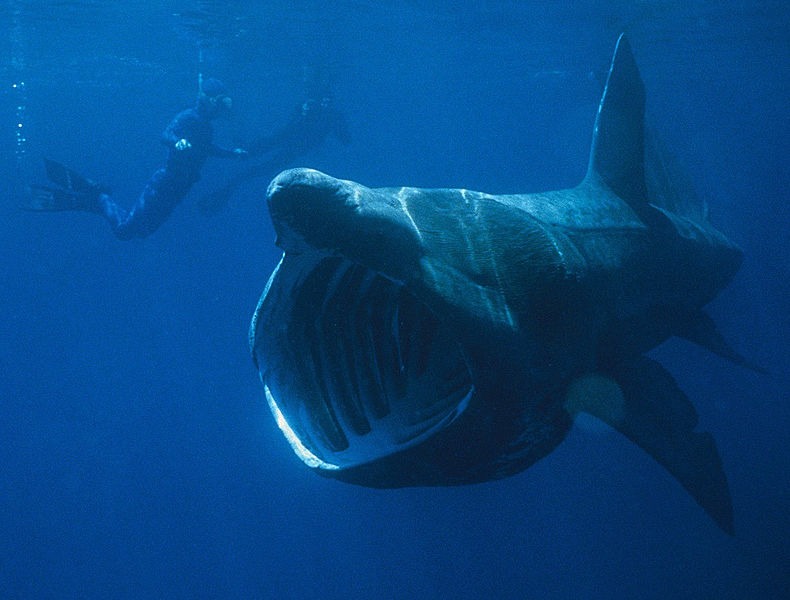
Cetorhinus maximus, the basking shark, is one of the largest sharks on Earth.
©Chris Gotschalk / Public Domain, from Wikimedia Commons, the free media repository – License
Basking sharks are among the largest sharks in the world, growing up to 26 feet long. These sharks that live in frigid Arctic waters may be huge, but they eat the smallest creatures in the ocean. Basking sharks are filter feeders, like baleen whales, and consume only plankton and other tiny creatures. They’re also known as sail fish, sunfish, bone sharks, or elephant sharks. Basking sharks are currently listed as endangered; they live in temperate waters all over the world.
7. Bluntnose Sixgill Shark
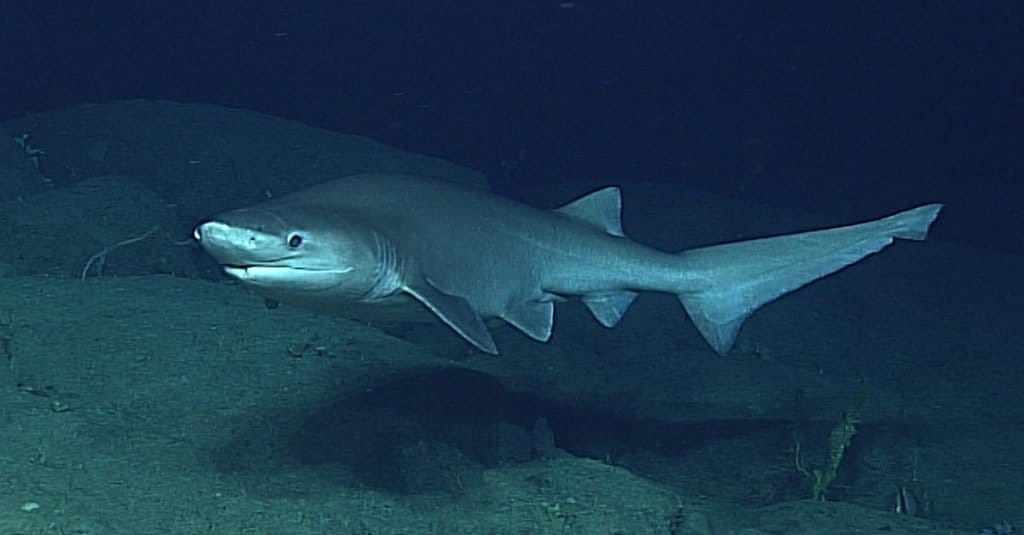
Hexanchus griseus, the bluntnose
sixgill shark
, lives only in very deep water.
©NOAA Ocean Explorer from USA / CC BY-SA 2.0 – License
Also known as the cow sharks, these sharks that live in frigid Arctic waters grow up to 20 feet long. They’re found in temperate waters all over the world and are present in the Arctic waters of the North Pacific. These sharks eat a wide variety of fish and have two different types of teeth. Their upper teeth are sharp and pointed, while their lower teeth are flat and serrated. Bluntnose sixgill sharks live and hunt in deep parts of the ocean; they’re specially adapted to survive in deep, cold waters.
How is Climate Change Impacting Arctic Shark Populations?

Artic sharks, like this spiny dogfish, are in negatively affected by climate change.
©Joern_k/Shutterstock.com
Climate change is having a devastating effect on Arctic shark populations. Rising sea temperatures are causing a decrease in the availability of prey, as well as a decrease in the number of suitable habitats for the sharks. As the waters warm, the sharks are forced to swim farther and farther north in search of a more hospitable environment, ultimately leading to a decrease in overall population numbers.
On top of that, the melting of the polar ice caps has caused a decrease in the overall salinity of the Arctic Ocean. This is having a negative effect on the availability of prey, as some species of fish are unable to survive in the lower-salinity waters. This, combined with the decrease in certain species of fish due to overfishing, has caused a decrease in the food supply for the Arctic sharks.
Furthermore, the increase in sea temperatures has caused a decrease in oxygen levels in the ocean, making it difficult for some species of Arctic sharks to survive. This has further contributed to the decline in Arctic shark populations.
What is the Impact of Fishing on Arctic Shark Populations?

One thing you can do to protect sharks is to eat less fish.
©Andreas Altenburger/iStock via Getty Images
Fishing is a major source of food and income for many cultures, but it can have a devastating effect on Arctic shark populations. Sharks are particularly vulnerable to overfishing due to their slow reproductive rates and late maturity. This means that their populations may not be able to recover quickly enough from fishing pressure.
The most common Arctic shark species, such as the Greenland shark and the Arctic sleeper shark, are particularly vulnerable to fishing due to their slow growth and late maturity. These species are being caught in large numbers, and with heavy fishing pressure, their numbers are in decline.
The problem is further compounded by the fact that Arctic shark populations are affected by other human activities, such as pollution and climate change. Pollution can interfere with breeding and development, while climate change can alter the Arctic ecosystem and cause food shortages.
The long-term consequences of fishing on Arctic shark populations are not yet fully understood. It is clear, however, that if these species are to survive, fishing pressure must be reduced, and other human activities need to be managed more carefully. Conservation efforts that limit fishing pressure, such as discontinuing the consumption of fish, are essential for Arctic shark populations to thrive.
Summary of 7 Sharks that Live in Frigid Arctic Waters
| Number | Shark |
|---|---|
| 1 | Porbeagle |
| 2 | Salmon Shark |
| 3 | Spiny Dogfish |
| 4 | Pacific Sleeper Shark |
| 5 | Greenland Shark |
| 6 | Basking Shark |
| 7 | Bluntnose Sixgill Shark |
The photo featured at the top of this post is © Martin Prochazkacz/Shutterstock.com
Thank you for reading! Have some feedback for us? Contact the AZ Animals editorial team.






